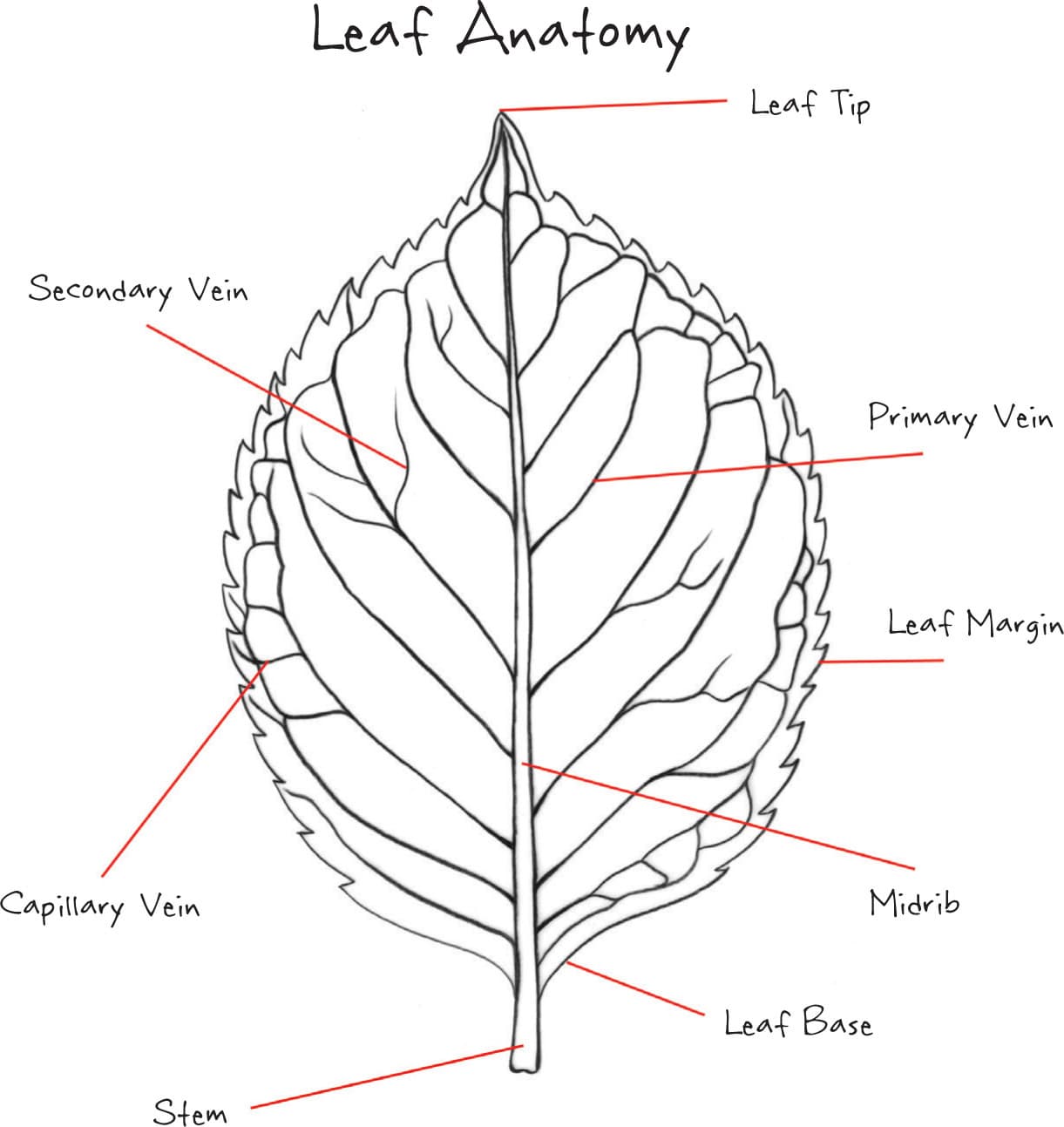Leaf Anatomy
To portray plants accurately, it’s important to understand simple leaf anatomy. The stem is the part of the leaf that attaches to the branch. It usually flows into the midrib, which tapers to the end of the leaf where it usually—but not always—ends in a point. A series of veins branch off from the midrib. These are the primary veins. The primary veins branch off into secondary veins and, in some cases, the secondary veins branch off into capillaries.

Look closely at how the venation comes off the midrib. Does it branch off in pairs or alternate? Are the capillaries visible to the naked eye, or do you need a magnifying glass or microscope to see the detail?
How Much Detail?
This is a question you should routinely ask yourself in the preliminary stages of planning an illustration. There are many ways to answer this question, and I always respond with, “It depends!” The number one question you want to ask yourself is this: Who is this drawing for? A botanist, a Girl Scouts troop, a botanical art competition?
Follow the tips below to help you decide how much detail to add to your botanical illustrations.
• If you’re creating work for a botanist, he or she usually wants to highlight a specific feature. It’s important to know exactly what the focus of the illustration should be from the start. Find out how much detail is required to avoid either having to start over or spending too much time developing unnecessary detail.
• Know your target audience. If the illustration is for a certain age group, make sure you depict enough information for this audience. For instance, if the illustration is for a Girl Scout’s field guide, it shouldn’t have too much detail, but it should be recognizable and suitable for learning basic plant identification.
• If you’re creating a piece for a botanical art competition, find out who the jurors are. See what others before you have done, and work toward that standard.
• If you are doing it for yourself, enjoy, observe, and see what works for you—explore the possibilities!

Here is a sample of a basic leaf drawing with added detail. This generic drawing has a magnification of the detail. Putting a circle that extends beyond the leaf’s perimeter around the detail lets the viewer know it is a magnification.
Leaf Rubbings
The underside of a leaf typically has raised veins. An easy way to record the venation is to create a rubbing, which gives you a visual record of the venation long after the leaf has died. The rubbing process damages leaves, so collect more than one of the same type for additional reference while you work.

Place the leaf topside down on a table or flat surface, with the underside facing up and the raised veins exposed. Then place a piece of tracing or vellum paper on top. Make sure the paper is tight and smooth by holding it down with your non-drawing hand or using removable artist tape. Just don’t put any tape on the leaf!
Use the side of a soft lead 2B pencil to apply graphite over the entire leaf. The veins will appear on the tracing paper. Make sure to include the leaf margin. Once you have finished the rubbing, remove the tracing paper and discard the leaf.

